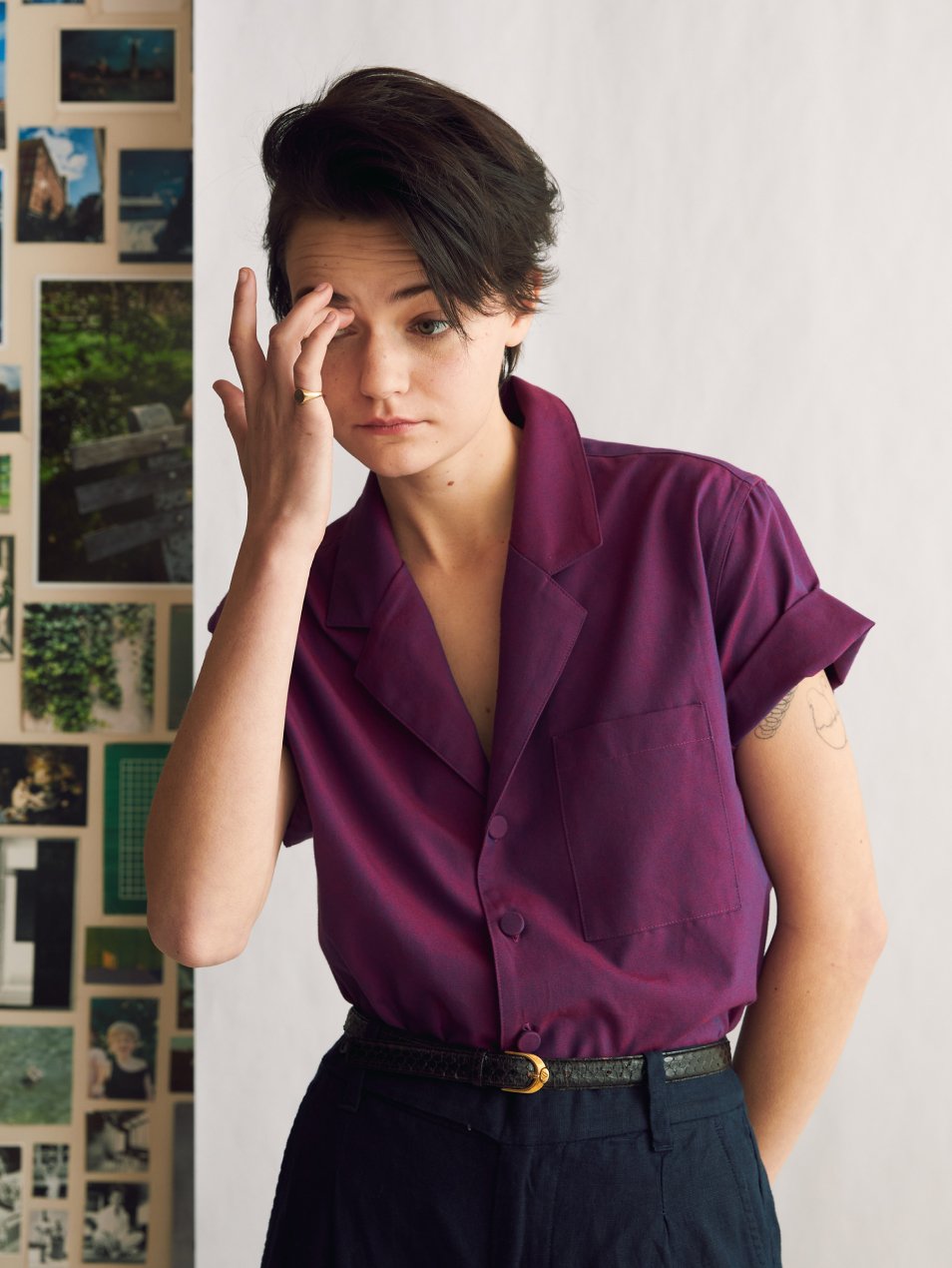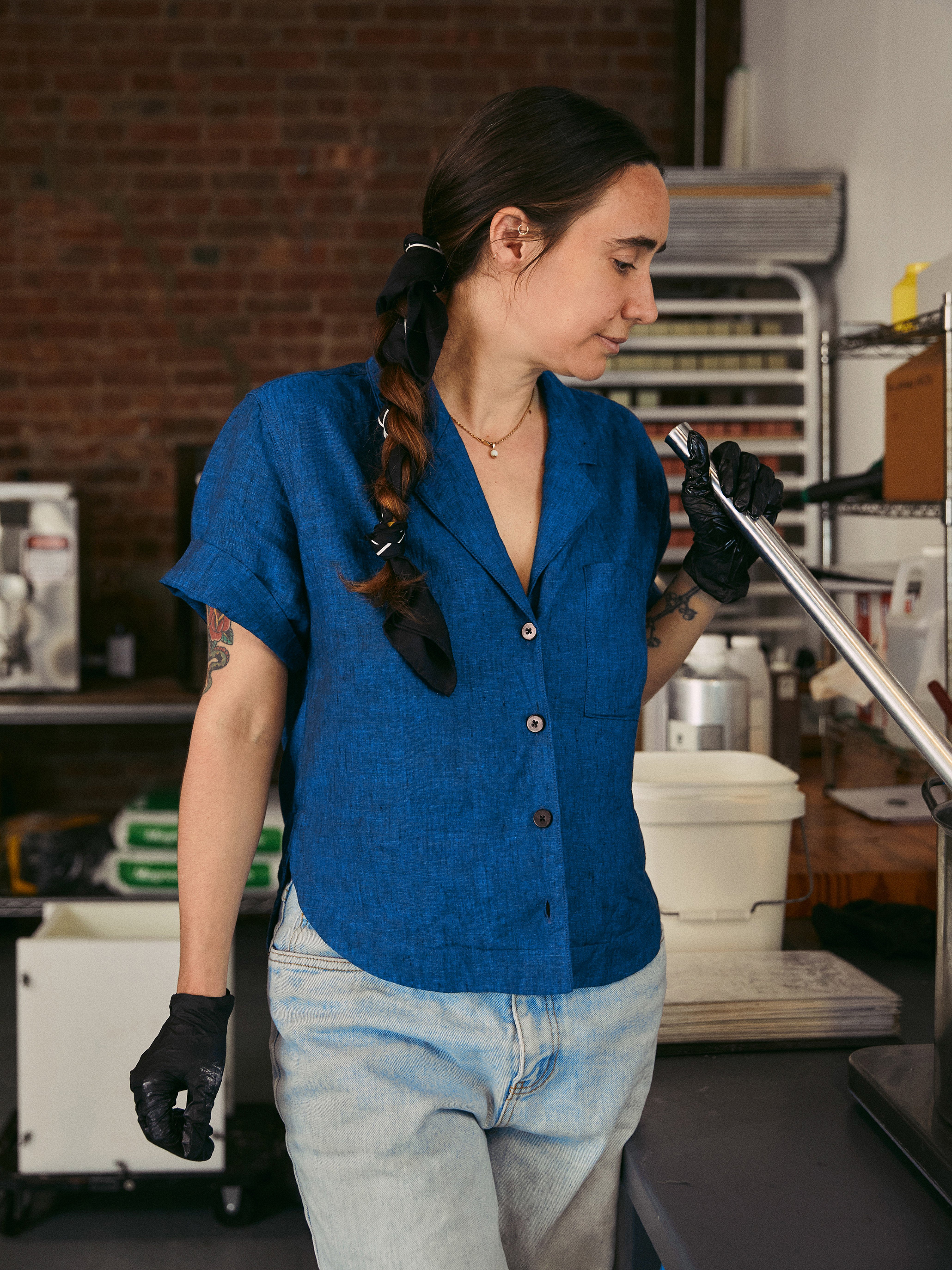meet our
TEXTURED LINEN
What it is:
A versatile, ancient, fabric made from the flax plant that dyes incredibly well.
How it feels:
Breathable and light, like your favorite summer blanket.
Why we love it:
A slow fashion staple, it feels and looks naturally luxurious, wicks moisture, and is 100% biodegradable.
We work with Belgian linen from the Flanders region, as well as linen made in Portugal out of flax grown in Normandy, France.



It’s a plant that looks like grass and grows like a magic beanstalk. It’s typically rainfed, meaning that it doesn’t require any extra irrigation to grow, and it’s been cultivated for its many uses including dyes, varnishes, oils, food, and - of course - linen for at least 5,000 years. Egyptian mummies? Wrapped in linen made from flax.
How flax becomes linen
To make linen, flax is pulled, rather than cut, to get the longest fibers possible. Next, the harvested plant must be “stooked,” i.e. tied together and stacked in bundles called “beats.” Once dry, the seeds are removed from the flax in a combing-like process called “scutching.” Only then, when the plant stock has been separated from the fibers, can yarn be spun.
How are these colors so vibrant?!
The reason our linen colors are so vibrant is because linen naturally holds pigment extremely well. When that same flax plant is extracted into oil, it’s called linseed -- a super common material used in traditional oil painting. Linseed oil helps the paint pigment hold those same super vibrant colors.
A linen shirt or linen dress is the ultimate summer staple, thanks to the fact that it wicks moisture incredibly well and has a looser weave than many other fabrics. But those same properties make it a great layer underneath warmer garments for transitional weather dressing.
Linen can be machine washed, in cold water on a delicate cycle, with similar colors. To dry, hang the garment in a well ventilated area so that it dries quickly. You can also dry clean it.
100% natural linen like ours is known to wrinkle. We love that! It’s part of the linen aesthetic, so pristine smoothness is not required if you aren’t into that. Remember, “wrinkle free” linen is code for “chemically treated” linen. That said, if you prefer a smoother look, you can take a warm (read: not hot!) iron to it, or some steam.
1. Linen is naturally antibacterial and pathogen-resistant – it absorbs and wicks away moisture without holding bacteria, which is why it has been used as bandages for thousands of years.
2. The oldest linen samples were found in Swiss lake dwellings in 8,000 BC, and it was also commonly used in Ancient Egypt. The oldest woven dress, the Tarkhan dress (sometime between 3482 BC and 3102 BC), was made of linen.
3. Linen is hygroscopic which means it rapidly absorbs and releases moisture. In fact, linen can absorb up to 20% of its own weight in water before it even feels wet.
4. Linen was the most popular and widely used fabric throughout human history until the Industrial Revolution when an emergence of spinning machines and North America’s large cotton plantations meant that cotton became the more affordable choice.





